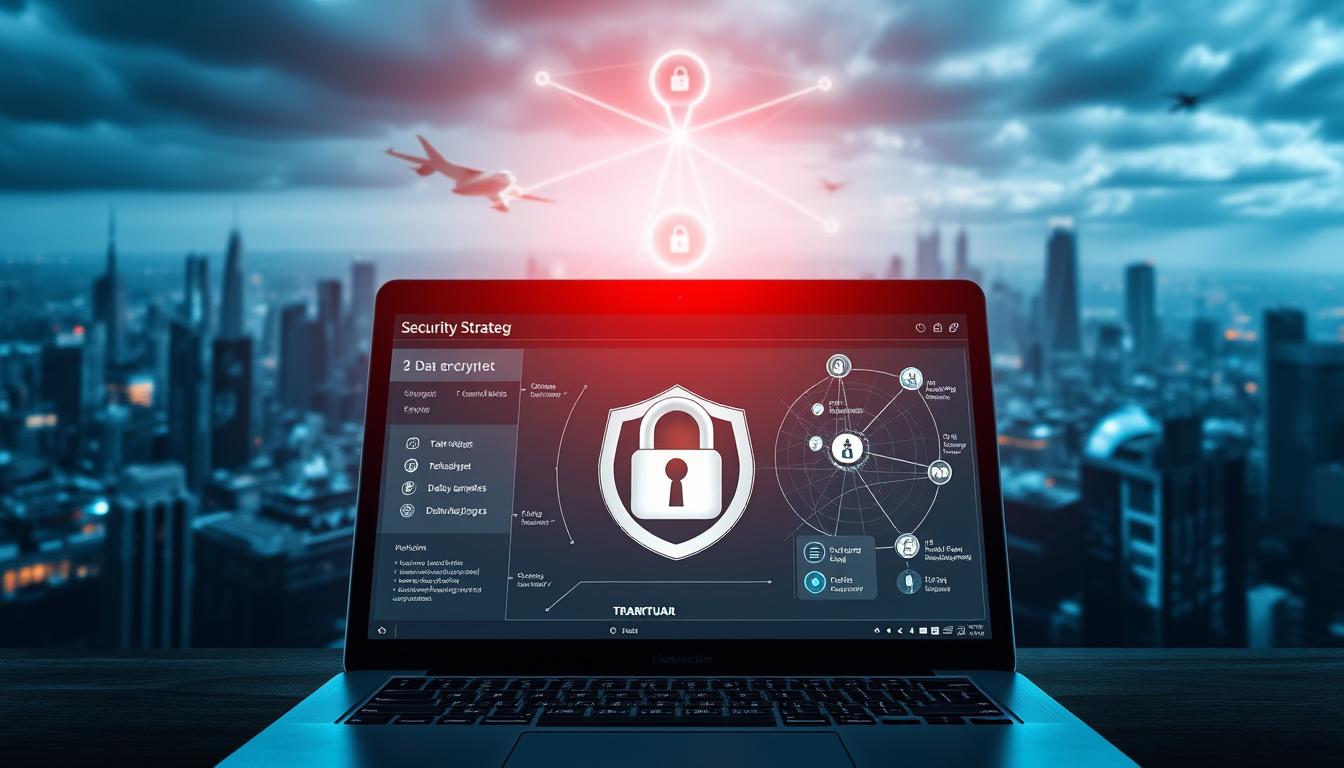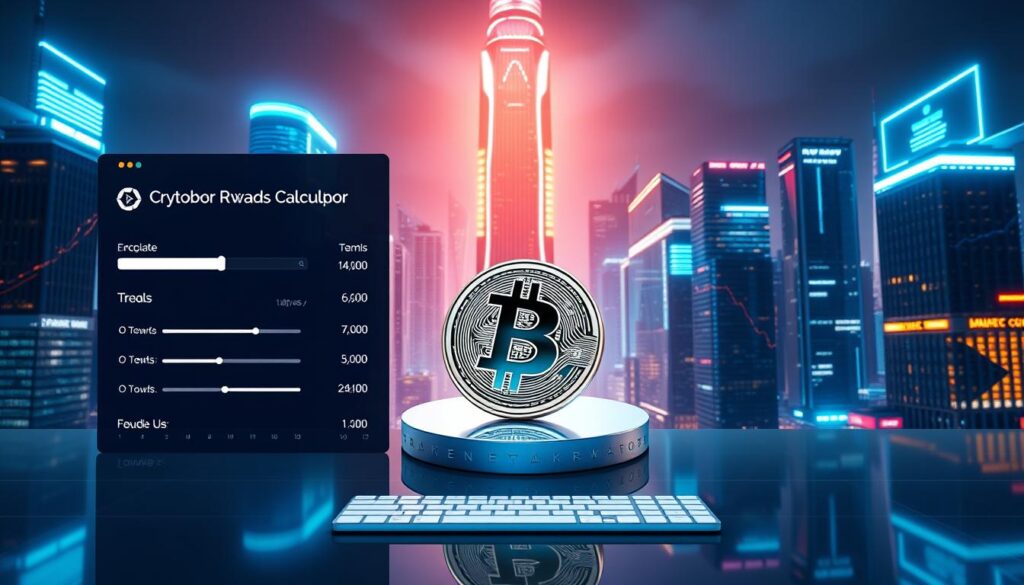Now Reading: Crypto Security Tips: Safeguarding Your Investments
- 01
Crypto Security Tips: Safeguarding Your Investments
Crypto Security Tips: Safeguarding Your Investments

Protecting your digital wealth demands more than basic password hygiene. While blockchain technology offers groundbreaking financial freedom, its decentralized nature also introduces unique risks. Investors must blend traditional cybersecurity habits with specialized tools designed for digital asset protection.
Think of your cryptocurrency portfolio like a high-value safe. You wouldn’t leave it unlocked or share its combination. Similarly, securing blockchain-based investments requires unique passwords, secure storage solutions, and vigilance against phishing scams. Fake apps and malicious websites often mimic legitimate platforms to steal login credentials.
This guide explores why a multi-layered defense works best. We’ll examine authentication protocols that go beyond SMS verification and hardware wallets that keep private keys offline. You’ll learn how to balance convenience with ironclad protection—without sacrificing access to your funds.
Remember: Successful investors treat their digital holdings with the same care as physical assets. By combining technology with ongoing education, you create a fortress around your investments. Let’s build that foundation together.
Key Takeaways
- Blockchain investments require both standard cybersecurity practices and specialized protective measures
- Hardware wallets provide superior protection compared to online storage options
- Two-factor authentication significantly reduces unauthorized account access
- Phishing scams remain one of the most common theft methods in decentralized finance
- Regular software updates help patch vulnerabilities in crypto management tools
- Diversified storage strategies minimize risk from single-point failures
Understanding Cryptocurrency Threats
Investors face evolving challenges in the decentralized finance space. While blockchain technology offers transparency, its ecosystem attracts sophisticated threats targeting both systems and users.

Overview of Digital Asset Risks
Phishing scams remain rampant, with fake login pages mimicking popular exchanges. These fraudulent sites capture login details instantly. Malware infections often occur through malicious downloads, silently recording keystrokes to steal credentials.
Centralized platforms store vast amounts of digital assets, making them lucrative targets. Recent breaches highlight how hackers exploit weak points in exchange infrastructure. Even minor oversights can lead to catastrophic losses.
Common Vulnerabilities in the Crypto Landscape
Smart contracts power decentralized apps but become liabilities if poorly coded. Attackers frequently exploit loopholes to drain funds permanently. One coding error can compromise entire projects.
Human mistakes compound these risks. Sending funds to incorrect wallet addresses or misplacing private keys often proves irreversible. Unlike traditional banking, blockchain transactions lack cancellation options.
- Fraudulent exchange impersonation via social media
- Outdated software enabling malware infiltration
- Public Wi-Fi networks exposing transaction data
Essential crypto security tips for Protecting Your Investments
Guarding blockchain-based holdings requires deliberate habits many overlook. Start by isolating financial activity: establish an email used exclusively for exchanges and wallets. This simple step limits exposure if other accounts face breaches.

Building Your Defense Framework
Reusing passwords across platforms invites disaster. Over 25% of breaches trace back to weak or duplicated credentials. A password manager solves this by generating and storing unique combinations for every service. These tools encrypt data, letting users focus on access rather than memorization.
Conduct quarterly reviews of account permissions and login histories. Look for unrecognized devices or locations. This practice catches suspicious activity before thieves drain wallets.
Understand where responsibility lies: custodial services control private keys, while non-custodial options place ownership on you. Each model impacts risk levels. Diversify storage across both types to avoid single points of failure.
Create an actionable plan covering these elements:
- Separate email for financial accounts
- Biometric authentication where available
- Encrypted backups of recovery phrases
- Subscription to threat intelligence newsletters
Digital wealth grows through vigilance as much as market gains. Update protocols as new threats emerge, treating protection as a continuous process rather than a one-time setup.
Secure Wallet Storage and Management
Your choice of storage tools determines how well your digital assets withstand modern threats. Unlike traditional bank accounts, blockchain-based holdings demand specialized approaches that balance accessibility with ironclad protection.

Hot Wallets vs. Cold Wallets
Hot wallets connect to the internet, enabling instant transactions for active traders. Think of them as checking accounts for digital assets—perfect for moving funds quickly but vulnerable to online attacks. Popular mobile and web-based options prioritize speed over absolute safety.
Cold storage solutions like hardware wallets keep private keys offline. These physical devices resemble USB drives but contain military-grade encryption. Thieves would need both the device and its PIN to access holdings—a critical barrier against remote hacking attempts.
Strategies for Managing Multiple Wallets
Smart investors distribute assets across different storage types. Consider these approaches:
- Use hot wallets for daily trading amounts (under 10% of total holdings)
- Store long-term investments in cold storage through secure storage methods
- Maintain separate wallets for different cryptocurrencies
Always back up recovery phrases on fireproof metal plates or encrypted drives. Test restoration processes periodically—your future self will thank you when upgrading hardware or recovering from device failures.
Enhancing Authentication and Password Security
Your first line of defense starts with airtight authentication and password protocols. These tools act as gatekeepers for your digital assets, blocking unauthorized access while maintaining convenience for legitimate users.
Implementing Two-Factor Authentication Effectively
Two-factor authentication (2FA) adds a dynamic shield to your accounts. Authenticator apps like Authy generate time-sensitive codes that vanish after 60 seconds—far safer than SMS codes vulnerable to SIM swaps. For maximum protection, hardware keys like YubiKey use unphishable cryptographic verification during login attempts.
Enable two-factor authentication on all exchange accounts and wallets. Pair this with biometric checks on mobile devices for layered identity confirmation. This approach ensures thieves need both your password and physical hardware to breach accounts.
Crafting Unbreakable Passwords
Strong passwords combine randomness with length—aim for 16+ characters mixing symbols, numbers, and varied cases. Tools like Bitwarden create and store complex combinations automatically, eliminating risky password reuse across platforms.
Follow these guidelines to strengthen access controls:
- Update passwords every 90 days using manager-generated replacements
- Audit accounts quarterly for suspicious login activity
- Never share credentials via email or messaging apps
By treating authentication as a living system rather than a fixed setup, you adapt to evolving threats seamlessly. Regular reviews keep your defenses sharp against emerging attack methods.
Avoiding Scams, Phishing, and Fraudulent Platforms
Navigating the digital asset landscape requires sharp awareness of deceptive tactics. Fraudsters constantly refine their methods to exploit even minor lapses in judgment. Staying protected means learning to spot red flags before they become costly mistakes.
Recognizing Phishing Attempts and Fake Websites
Fraudulent emails often mimic official communications from exchanges or wallet providers. These messages pressure recipients with urgent claims like “suspicious login attempts” or “expiring rewards.” Legitimate companies never demand sensitive information through email links.
Fake websites use subtle URL variations like “Coinbáse-support.com” instead of “Coinbase.com.” Always type platform addresses manually rather than clicking links. Enable bookmarking for frequently visited sites to avoid typos.
Verifying Wallet Addresses and Transaction Details
Malware can hijack clipboard data, swapping legitimate addresses with thieves’ destinations. Manually verify every character in wallet IDs before sending funds. A single altered digit could redirect your entire transaction.
Double-check these elements when transferring digital assets:
- Full recipient address (not just first/last characters)
- Network selection (e.g., ERC20 vs. BEP20)
- Transaction fees and confirmation times
Social media “giveaways” requiring upfront deposits always prove fraudulent. Treat unsolicited investment opportunities like landmines—steer clear and report them immediately.
Leveraging Hardware Wallets and Robust Backup Strategies
Modern digital asset protection demands tools that outsmart evolving threats. Physical devices and layered backup systems create unbreakable shields for your holdings. Unlike cloud-based options, these solutions prioritize isolation from online vulnerabilities.
Why Physical Security Keys Matter
Hardware wallets store private keys on dedicated devices—like USB drives with military-grade encryption. They require physical access and a PIN, making remote theft nearly impossible. Even if malware infects your computer, funds stay safe offline.
Multi-signature setups add another layer. Transactions need approval from multiple devices or users. This prevents single-point failures, ideal for shared accounts or large balances. Combine this with biometric verification for ironclad access control.
Building Fail-Safe Backup Systems
Backup strategies must account for disasters and human error. Write recovery phrases on fireproof metal plates—never digital files. Store copies in separate locations like bank vaults and home safes.
Test restoration processes annually. Simulate device loss to ensure backups work. Follow cryptocurrency wallet security best practices by updating firmware and auditing storage methods quarterly. Treat backups like priceless artifacts—because they are.
Securing Your Digital Future in the Cryptocurrency World
The digital frontier evolves rapidly, demanding adaptive strategies to safeguard holdings. Emerging technologies like quantum-resistant cryptography will soon defend against advanced computational threats. Simultaneously, decentralized AI systems are learning to detect vulnerabilities in real time, acting as automated guardians for blockchain networks.
Self-healing protocols represent the next leap forward. These systems automatically patch weaknesses without human intervention. Cross-chain transactions will require built-in interoperability protections, ensuring safe asset transfers between platforms.
Tokenized reward systems incentivize ethical hackers to strengthen the ecosystem. Meanwhile, ongoing education remains critical. Users who understand address verification and multi-factor authentication create fewer entry points for attackers.
True safety emerges when cutting-edge tools meet personal responsibility. Regular audits of wallet permissions and transaction histories help maintain control. By blending innovation with disciplined habits, investors build lasting protection for their digital assets in this dynamic landscape.
FAQ
How does two-factor authentication protect digital assets?
Two-factor authentication adds an extra layer of defense by requiring a secondary verification method, such as a code from an app like Google Authenticator, alongside your password. This reduces the risk of unauthorized access even if login credentials are compromised.
What makes hardware wallets like Ledger or Trezor more secure?
Hardware wallets store private keys offline, isolating them from internet-based threats like malware or phishing attacks. Devices such as Ledger Nano S or Trezor Model T provide physical control over transactions, ensuring keys never leave the device.
How can I spot phishing attempts targeting my wallet?
Phishing scams often use fake websites, urgent emails, or deceptive links mimicking platforms like MetaMask. Always verify URLs, avoid clicking unsolicited links, and double-check wallet addresses before approving transfers.
Why should I avoid reusing passwords across exchanges?
Reusing passwords increases vulnerability—if one account is breached, others become at risk. Tools like 1Password or Bitwarden help generate and manage unique, complex passwords for each platform, minimizing exposure to credential-stuffing attacks.
What backup strategies prevent permanent loss of funds?
Store recovery phrases offline in fireproof safes or encrypted USB drives. Avoid digital backups on cloud services or screenshots. Test recovery processes periodically to ensure access to wallets like Exodus or Trust Wallet remains possible.
How do I verify a wallet address before sending transactions?
Always cross-check the first and last characters of an address manually. Use QR codes when possible, and send a small test amount first. Platforms like Coinbase or Binance offer address whitelisting for added confirmation.
Are browser extensions safe for managing digital assets?
Extensions like MetaMask require caution—only download from official sources, update regularly, and revoke unnecessary permissions. Pair them with hardware wallets like Keystone for enhanced protection during transactions.















